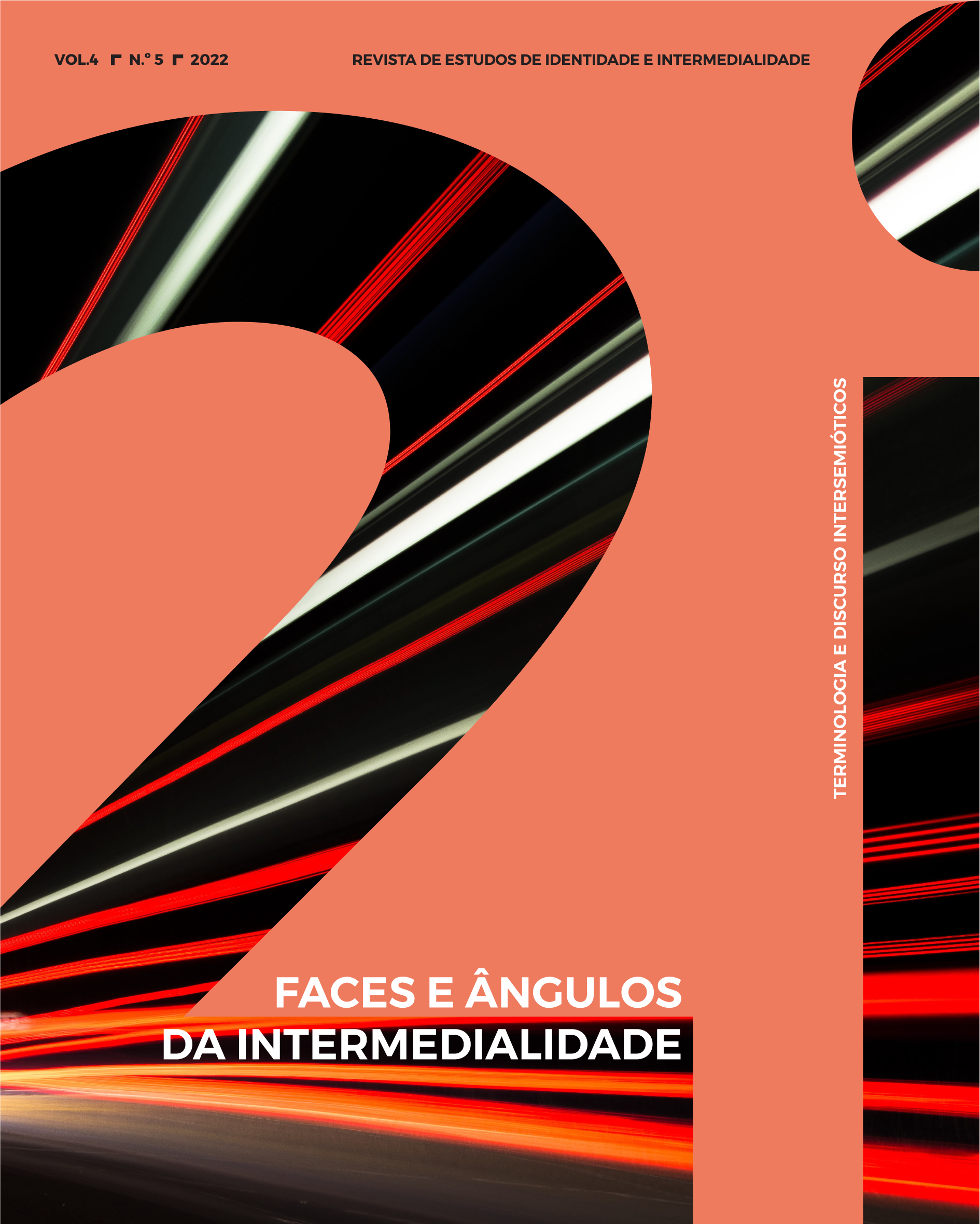12 Angry Men (1957)
The ekphrastic word-image at judgment
DOI:
https://doi.org/10.21814/2i.3758Palavras-chave:
12 Angry Men. Ekphrasis. Enargeia. Amplificatio. CinemaResumo
This essay focuses on the imagetic power of the word as a central element of the film 12 Angry Men (1957), directed by Sidney Lumet, with a screenplay by Reginald Rose from his writings and TV special (CBS, 1954, directed by Franklin Schaffner). The aforementioned film starred Henry Fonda (Davis character), among others. This approach is discussed based on the rhetorical concept of ekphrasis, a conceptual dimension already used in film analysis studies, especially by Pethö (2010), Elleström (2010), Killander et al (2014), Heffernan (1993, 2015), Gonçalo (2017) and Clüver (1998, 2019). Thus, the focus of this essay is to interpret how the cinematographic and filmic resources made by Lumet dialogue with the vast rhetorical tradition of ekphrasis. Among the considerations of this essay, it is highlighted that the film under analysis is an exemplary piece of a “word cinema”, that is, through rhetorical-cinematic resources of ekphrastic orientation, this filmic work produced, through the discursive conduction of the protagonist in opposition to the rest of the panel of judges, that in flashbacks, he reconstructs crime scenes to analyze the murder on trial.
Downloads
Referências
Aristóteles. (2005). Retórica. Prefácio e introdução de Manuel Alexandre Júnior (trad. e notas de Manuel Alexandre Júnior, Paulo Farmhouse Alberto e Abel do Nascimento Pena). Lisboa: Imprensa Nacional-Casa da Moeda.
Bugno-Narecka, D. e Vieira, M. P. (2020). Unveiling Ekphrasis On The Screen. Revista VIS: Revista do Programa de Pós-Graduação em Arte, [S. l.], 19 (2), 48-69.
Bugno-Narecka, D. (2017). Blurring the Boundaries: Ekphrasis as a Fold. Aletria, Belo Horizonte, 27 (2), 97-111. DOI: 10.17851/2317-2096.27.2.97-111. DOI: https://doi.org/10.17851/2317-2096.27.2.97-111
Cícero. (2005). Retórica a Herênio (trad. Adriana Seabra e Ana Paula Celestino Faria). São Paulo: Hedra.
Clüver, C. (2019). 'On gazers' encounters with visual art: ekphrasis, readers, 'iconotexts’. In Meek, R.; Kennedy, D., Ekphrastic Encounters: New Interdisciplinary Essays on Literature and the Visual Arts (pp. 237-256). Manchester: Manchester UP. DOI: https://doi.org/10.7228/manchester/9781526125798.003.0013
_______ (1998). Quotation, Enargeia, and the Functions of Ekphrasis. In Robillard, V. and Jongeneel, E., Pictures into Words: Theoretical and Descriptive Approaches to Ekphrasis (pp.35-52). Amsterdam: Vrije Universiteit UP.
Elleström, L. (2010). The Modalities of Media: A Model for Understanding Intermedial. Relations. In Elleström, L. (ed.), Media Borders, Multimodality and Intermediality (pp. 11-50). London: Palgrave Macmillan. DOI: https://doi.org/10.1057/9780230275201_2
_______ (2020). The Modalities of Media II: An Expanded Model for Understanding Intermedial Relations. In Elleström, L. (ed.), Beyond Media Borders. Volume 1: Intermedial Relations among Multimodal Media (pp. 3-91). Houndmills: Palgrave Macmillan. DOI: https://doi.org/10.1007/978-3-030-49679-1_1
Eisenstein, S. (1957). The Film Sense. (Edited and translated by Jay Leyda). New York: Meridian Books.
Gonçalo, P. (2017). Film in words/words in pictures: Ekphrasis modulations in Peter Handke and Wim Wenders’ cinematic collaborations. Journal of Screenwriting, 8(1). DOI: https://doi.org/10.1386/josc.8.1.83_1
Heffernan, J. (1993). Museum of Words. The Poetics of Ekphrasis from Homer to Ashbery. Chicago & London: The University of Chicago Press.
_______ (2015). Ekphrasis: theory. In Rippl, G. (ed.), Handbook of intermediality: literature-image-sound-music (pp. 35-49). Berlin: De Gruyter Mouton. DOI: https://doi.org/10.1515/9783110311075-003
Killander Cariboni, C.; Lutas, L. and Strukelj, A. (2014). A New Look on Ekphrasis: An Eye-tracking Experiment on a Cinematic Example. Ekphrasis. Images, Cinema, Theatre. Media, 12(2), 10-31.
Krieger, M. (1992). Ekphrasis: The Illusion of the Natural Sign. Baltimore: Johns Hopkins Univ. Press.
Lausberg, H. (1966). Manual de retórica literária. Lisboa: Fundação Calouste Gulbenkian.
Lima, F. A. C. (2021). A amplificatio como procedimento pré-ecfrástico na Oratio pro Sestio. In Fernandes Grizoste, W. and Bezerra dos Santos, F. (orgs.), Recepção & Ekphrasis no ensino de Letras Clássicas. Manaus: Editora UEA.
Longinus. (1890). On the Sublime (trans. by H. L. Havell Macmillan and Co). New York: (Project Gutemberg). Available at: https://www.gutenberg.org/files/17957/17957-h/17957-h.htm. Accessed on: oct. 31, 2021.
Mathew, S. (2021). Ekphrastic Temporality. New Literary History, 52 (2), 239-260. DOI: https://doi.org/10.1353/nlh.2021.0011
Metz, C. (1968). Essai sur la signification au cinéma. Paris: Klincksieck (Collection d'Esthétique, 3).
Mitchell, W. J. T. (1994). Ekphrasis and the Other. In Picture Theory: Essays on Verbal and Visual Representation (pp. 151-181). Chicago and London: University of Chicago Press.
Pethö, Á. (2010). Media in the Cinematic Imagination: Ekphrasis and the Poetics of the In-Between in Jean-Luc Godard's Cinema. In Elleström, L. (ed.), Media Borders, Multimodality and Intermediality (pp. 293-315). London: Palgrave Macmillan. DOI: https://doi.org/10.1057/9780230275201_15
Sager Eidt, L. M. (2008). Writing and Filming the Painting. Ekphrasis in Literature and Film. Amsterdam: Rodopi. DOI: https://doi.org/10.1163/9789401206273
1. Films cited
Lumet, S. (Director). Fonda, H.; Rose, R. (Screenwriters). (1957). 12 Angry Men. Los Angeles CA: Orion-Nova/ United Artists.
Kiarostami, A. (Director). (2007). Rug. Iran.
Downloads
Publicado
Como Citar
Edição
Secção
Licença
Direitos de Autor (c) 2022 Helciclever Barros da Silva Sales

Este trabalho encontra-se publicado com a Creative Commons Atribuição-NãoComercial 4.0.


.jpg)










